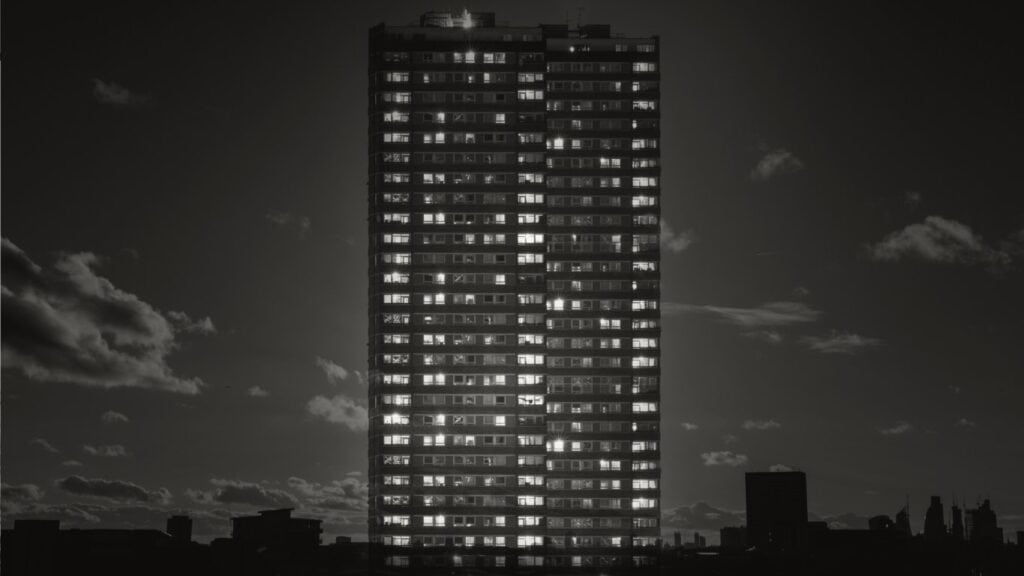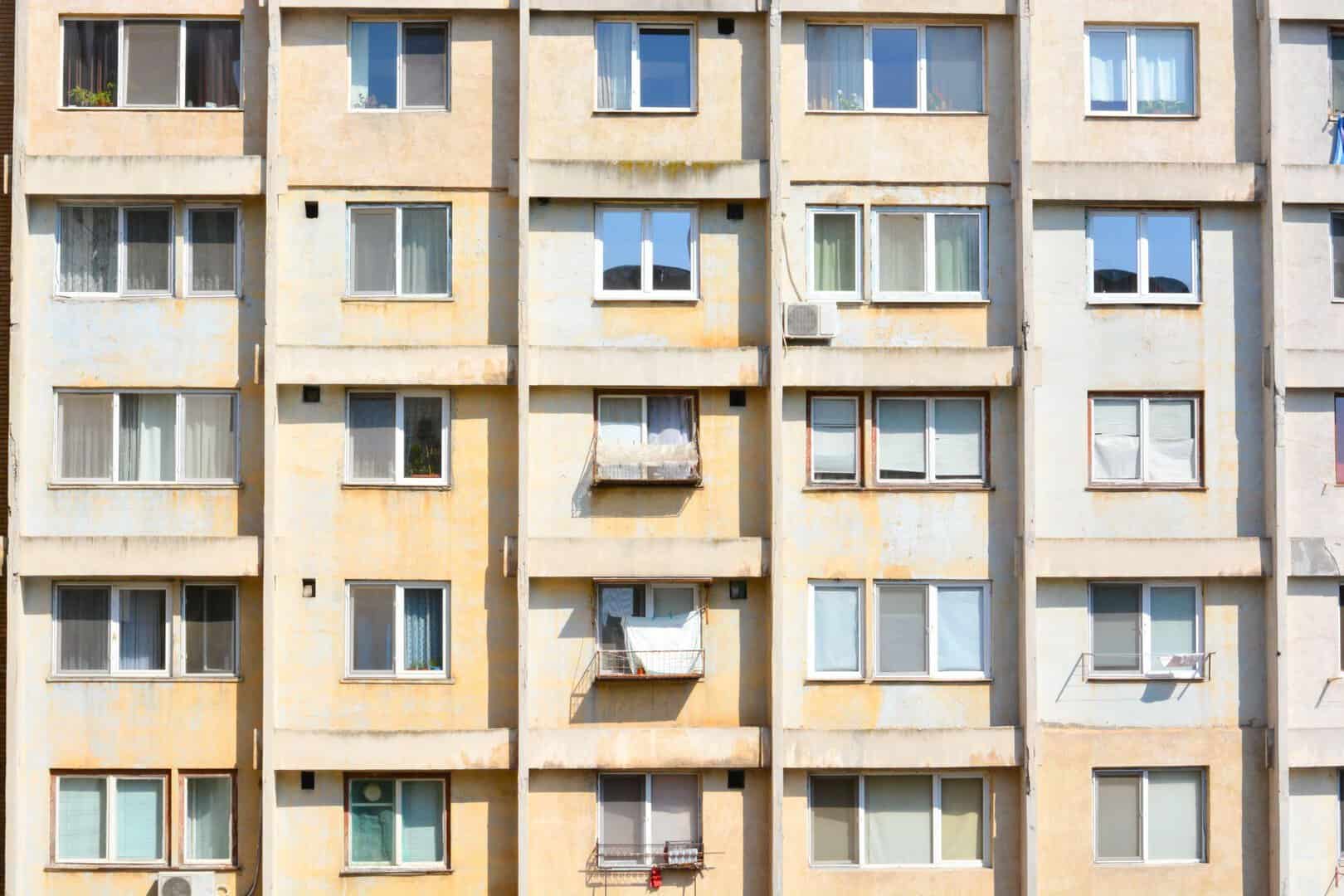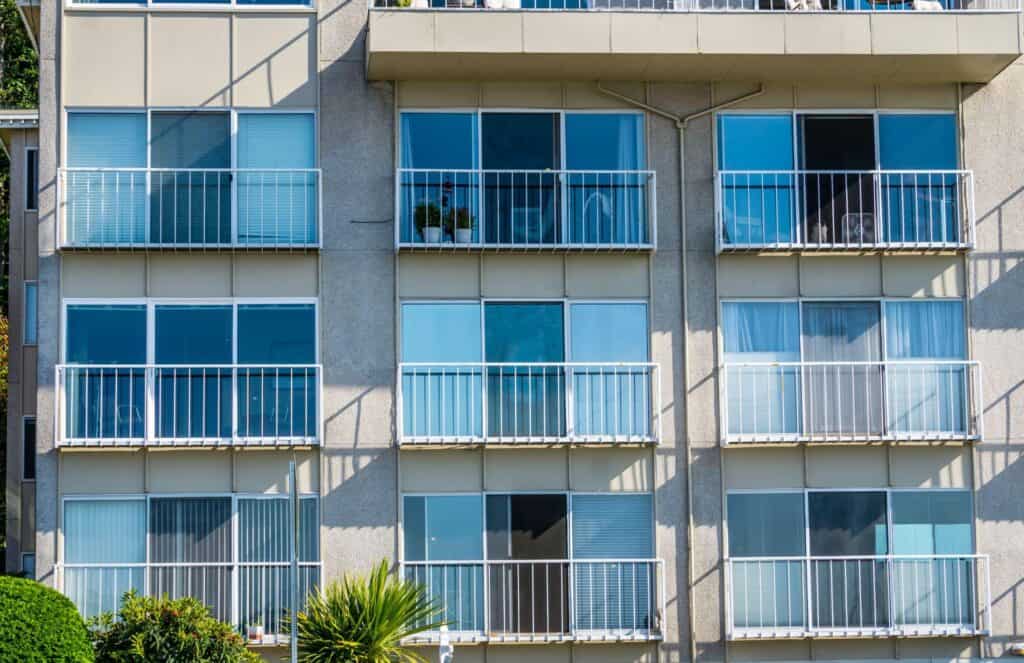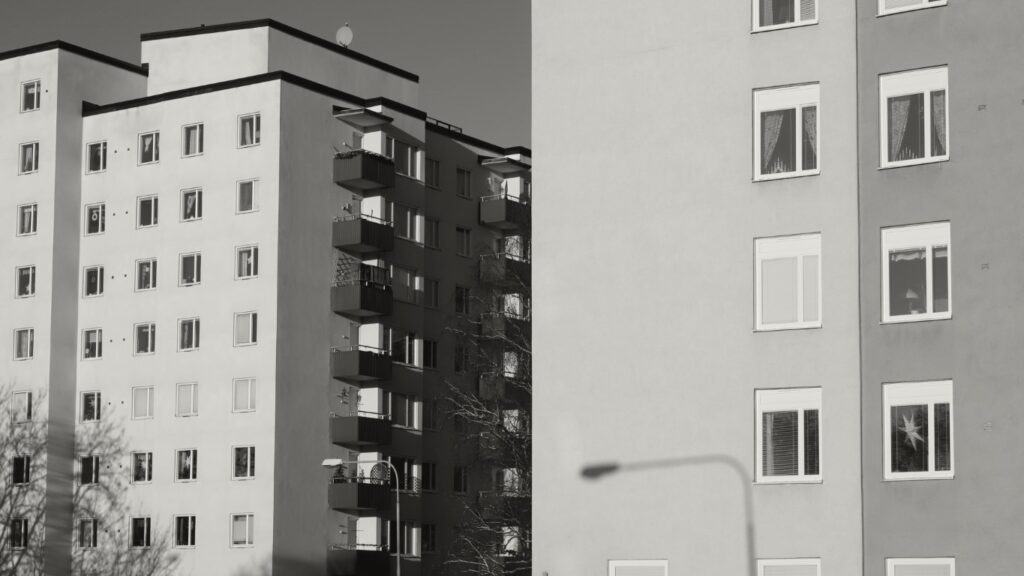It comes down to three things: sturdy materials, simple design, and careful craftsmanship. Builders in the mid-20th century relied on durable materials like concrete, brick, and steel — the materials that have proven their longevity.
The designs were often minimalistic, focusing on functionality over extravagance, which made them easier to maintain over time. And construction was hands-on, with attention to detail ensuring structural integrity.
Family life in the 1950s was centered around community and stability, with many families enjoying a comfortable lifestyle in these well-built homes.
Now, let’s take a look at where these resilient 1950s condos can still be found thriving in the U.S. today — from Hillsboro, Oregon to Miami, Florida and beyond. Many of these buildings have withstood decades of environmental challenges, proving their durability.
From Coast to Coast: Thriving 1950s Condos in the U.S.
Across the U.S., 1950s condos have stood resilient against environmental challenges. Let’s explore the cities where these durable homes still offer dependable living today.
Portland, Oregon
Portland’s real estate is still selling a number of these old condos. Constructed with sturdy materials like concrete and brick, these homes have proven to be highly resilient to the region’s wet climate and occasional seismic activity. Built with long-term durability in mind, these condos continue to provide solid, weather-resistant housing options, standing strong against the Pacific Northwest’s frequent rainfall and environmental shifts.
Miami, Florida
Many 1950s condos here are still highly sought after for their retro charm and robust construction, despite the region’s exposure to hurricanes. These condos were built with reinforced concrete, designed to withstand Florida’s hurricane season, making them incredibly durable even in the face of extreme weather conditions.
Chicago, Illinois
Chicago also boasts several examples of 1950s condos, particularly in the city’s outskirts, where you’ll find well-preserved condos with mid-century design. Built with thick masonry walls and high-quality steel, these buildings have survived the city’s harsh winters and remain both functional and stylish.
Los Angeles, California
1950s condos remain popular in LA for their minimalist aesthetic and sturdy construction. Often built to withstand earthquakes, these condos feature flexible steel frameworks and reinforced concrete that keep them standing strong, even in seismic zones. Many include expansive outdoor spaces and open floor plans that reflect the mid-century modern love for indoor-outdoor living.
New York City
Several condominiums from the 1950s, with the Upper West Side and Queens showcasing sturdy mid-century condos that are still standing strong. Many of these buildings were constructed using steel and concrete, allowing them to endure New York’s tough weather conditions and urban wear and tear.
Austin, Texas
1950s condos are admired for their robust brick exteriors and efficient layouts in Austin. Built during a time when durability was key, these buildings have held up well against the heat and humidity of Central Texas, with the brick providing excellent insulation and protection from the elements.
Seattle, Washington

In Seattle, mid-century condos remain popular, thanks to their sturdy construction using steel and concrete, perfect for withstanding the region’s frequent rain and cool climate. Many were designed with sloped roofs and waterproofing elements that keep the homes safe from moisture damage, even after decades of use.
Philadelphia, Pennsylvania
Several 1950s condos can still be found in areas like Rittenhouse Square. Constructed with masonry and reinforced concrete, these buildings continue to serve as resilient, low-maintenance homes that stand up to the city’s humid summers and cold winters.
Boston, Massachusetts
In Boston, particularly in Cambridge, 1950s condos remain in high demand. Known for their durable brick exteriors, these buildings have stood the test of time through harsh New England winters. Thick walls and solid construction have ensured these homes continue to resist snow, ice, and strong winds year after year.
Denver, Colorado
These condos are noted for their strong, no-frills construction, which has held up well against Colorado’s changing seasons, offering a mix of durability and simplicity. These condos were built with materials designed to withstand heavy snowfalls in winter and intense sunlight in summer, making them ideal for year-round living.
San Diego, California
Many 1950s condos continue to attract buyers due to their minimalist design and use of sturdy materials, well-suited to the coastal environment. The durable construction and thoughtful layout allow these condos to resist moisture and salt air damage, a common concern in seaside properties.
Detroit, Michigan
Here, you can find mid-century condos that reflect the city’s industrial past. Built with resilience in mind, these condos have weathered decades of urban challenges, including Detroit’s harsh winters, economic fluctuations, and population shifts, making them reliable housing options that stand the test of time.
Back Then vs. Now
Back in the day, builders used solid materials like concrete and brick, which have stood the test of time. The designs were straightforward, focused on practicality and durability over flashiness—oh, and let’s not forget the occasional asbestos, which was unfortunately the go-to “miracle material” of the era (until we learned better!).
Add in the fact that homes were built with more hands-on care compared to today’s mass production, and you’ve got condos that can handle decades of wear and tear without losing their charm.
Today, however, construction often relies more on lighter materials such as wood framing, vinyl siding, and drywall. While this shift allows for faster, more cost-effective building, it can compromise long-term durability.
Modern materials are more susceptible to damage from moisture, extreme weather, and fire.
Also, modern building codes have become more complex, meaning more insulation and energy efficiency requirements, but sometimes at the expense of resilience.
For example, the lighter materials used today often require more maintenance and repairs, and in areas prone to hurricanes, tornadoes, or wildfires, they may not provide the same level of protection that older buildings do.
With increasing environmental issues like climate change, the resilience challenges of newer buildings, particularly in coastal and disaster-prone areas, become more evident. Overall, while today’s buildings may be more energy-efficient, they often lack the long-term robustness that 1950s condos possess.
